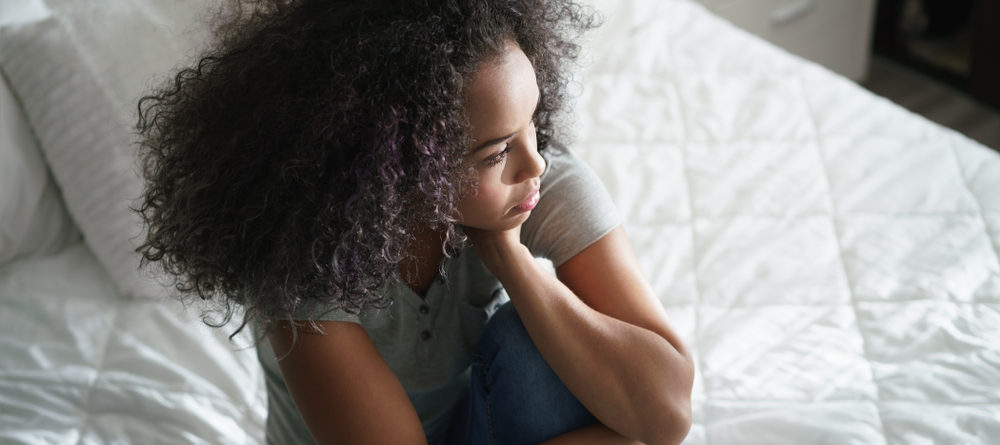Gender Differences in Teen Depression
The teenage years can be challenging. Between physical changes in the body, intense peer pressure, and an increased sense of social anxiety, teenagers often have difficulties finding their place. Many want to fit in, while others want to stand out, even rebel. Teen depression is also becoming an alarmingly frequent trait of those transition years. Recent research has found that the rate of depression is increasing and that there are distinct gender differences in teen depression.
Transition Years
The teen years are a natural transition from being a child to growing into an adult. While women of all ages tend to be more aware of their appearance than men, particularly in how others see them, most young people develop a heightened sense of socialization as they enter their teenage years. As children, their clothing choices and hairstyles were not as important to them. As teenagers, their entire social life may depend on those factors, at least in their own eyes.
Increase in Depression
In recent years, the rate of depression, suicidal thoughts, and suicide attempts has increased dramatically. Research shows that in the late 2010s, more adolescents experienced serious psychological distress, including major depression and suicidal thoughts, than in the mid-2000s. the rates of major depressive episodes increased by 52% from 2005 to 2017, from 8.7% to 13.2% of young people aged 12 to 17.
Gender Differences
Girls experience almost twice the rate of depression that boys do, beginning as young as age 12. One study of self-inflicted wounds leading to emergency room visits indicated a significant difference in the increased rate of suicide attempts between young males and females. Self-inflicted wounds are a strong risk factor for suicide. While the rates for teenage boys remained constant from 2001 to 2015, the number of emergency room visits for teenage girls due to self-inflicted wounds increased 8.4% yearly between 2009 and 2015.
The difference in depression rates could be attributed to the differences in the rate of physical changes between boys and girls. Puberty typically starts earlier, and hormonal changes tend to be more evident in young girls. Teenage girls are also more concerned with how others perceive them. While these gender differences explain the overall differences in depression rates, other factors may be involved in the recent increase in female teenagers.
Common Triggers and Risk Factors for Teen Depression
Teen depression can stem from a variety of triggers, including academic pressures, family conflict, or significant life changes such as moving or parents’ divorce. Bullying—whether online or in-person—also contributes to emotional distress. Excessive social media use can magnify these feelings by fostering unrealistic expectations and comparisons with peers. Girls, in particular, may be more susceptible to negative self-image or self-esteem issues, further heightening their risk for depression.
Recognizing the Signs of Teen Depression
Early recognition of teen depression symptoms is crucial for timely intervention. Some warning signs include:
- Persistent sadness or irritability
- Changes in eating or sleeping patterns
- Withdrawal from friends or activities once enjoyed
- Sudden academic decline
- Heightened sensitivity to rejection or failure
Since teen depression can manifest differently in each individual, it’s essential to watch for any marked shifts in behavior or mood and to seek professional help if these symptoms persist.
Effective Coping Strategies
Encouraging healthy coping strategies is a powerful way to combat teen depression. Regular exercise, journaling, engaging in hobbies, and maintaining strong social connections can relieve emotions. Family support—through open communication and a stable home environment—often plays a vital role in a teen’s mental health. In some cases, professional counseling or therapy may be necessary to address underlying issues, especially when combined with medication or other treatment modalities.

Social Media
The rise in depression rates among teenagers also coincides with the rise in popularity of the smartphone. Today’s teenagers do not know a world of social interaction that doesn’t include social media. Both young men and women spend a significant amount of time on their smartphones now. The use of smartphones and social media appears to correlate with the increase in depression rates among teenagers. However, it seems to have impacted teenage girls more than boys.
One reason for this may be that girls spend more time socializing on their smartphones, including texting and interacting on social media. Boys also text and use social media somewhat but tend to use their smartphones more for playing games. Since teen girls are more focused on what others think of them than boys, the increased use of social media can improve that level of anxiety and, subsequently, the rates of depression.
An association has been found between moderate or heavy digital media use and the increased rate of mental health issues and worsened psychological well-being for teenage girls. One study found that the rate of depression also aligns with the amount of time spent on social media. In that study, girls who spent six hours or more on social media were significantly more unhappy than those who spent only 30 minutes daily. The differences for boys were less noticeable.
Psychotherapy for Teens
The teenage years are full of pressures from family, friends, and school. Social media usage has increased social pressure, which appears to affect teenage girls more than boys. When teenagers of both genders are not able to manage the stressors they face in real life and the virtual world, therapy can help. Psychotherapy is effective for treating depressed teens, those who have turned to substance abuse, and those who are engaging in self-destructive behavior.
If Your Teen Needs Help, Contact R&A Therapeutic Partners Today
At R&A Therapeutic Partners, we help teens and adults find the path that works best for them. Your needs are unique to you, and we make it our priority to identify the tools that keep you engaged and thriving in your recovery. We encourage you to contact the Miami interventionist Raymond
Estefania and Ana Moreno to find out the services R&A Therapeutic
Partners offers. Call us at 786-452-7352 to schedule your appointment.
At R&A Therapeutic Partners Raymond Estefania and Ana Moreno specialize in substance use and mental health disorder evaluations, treatment, intervention and therapeutic/educational consulting for clients throughout the greater South Florida area, as well as nationally and internationally. For more resources and information please visit Therapeutic-Partners.com or on Facebook.

